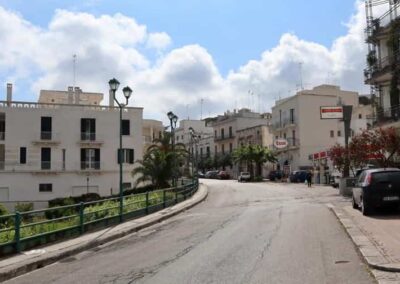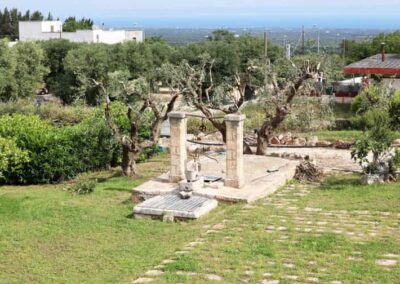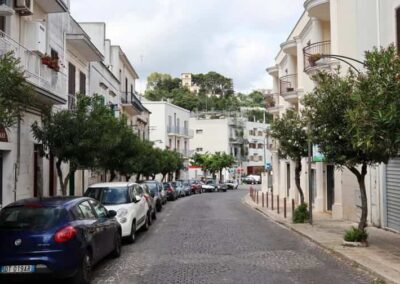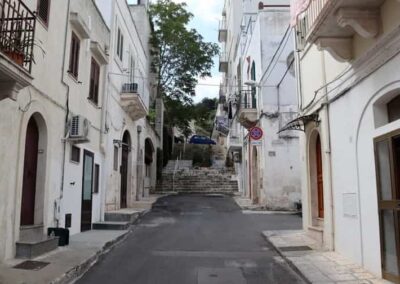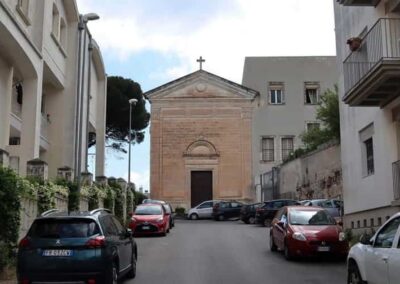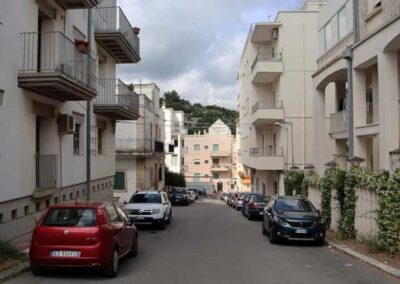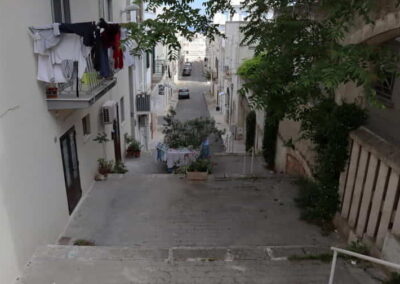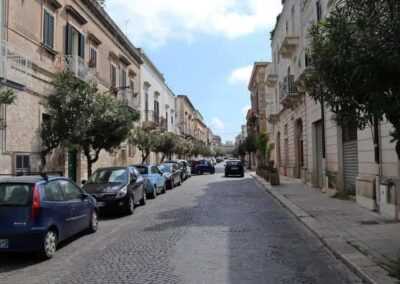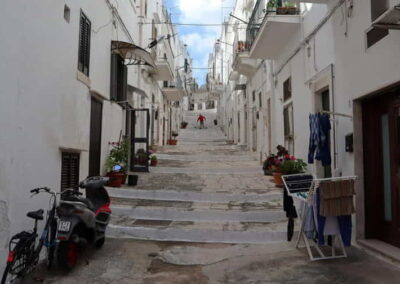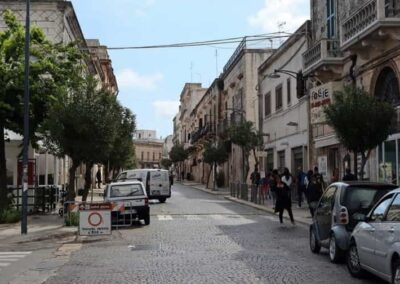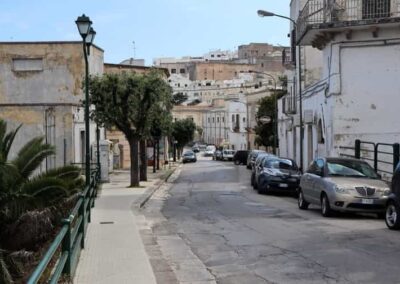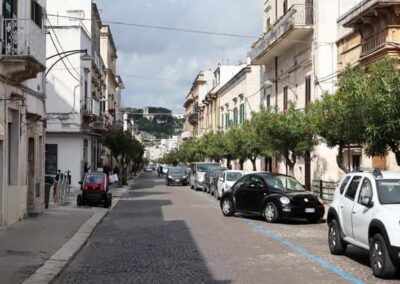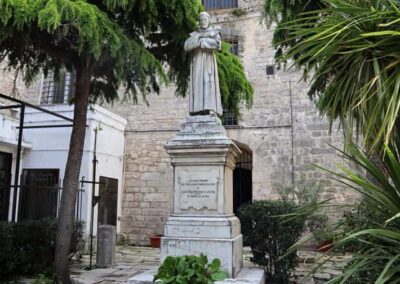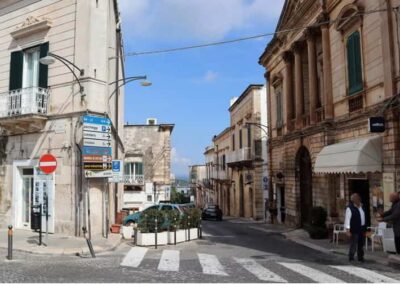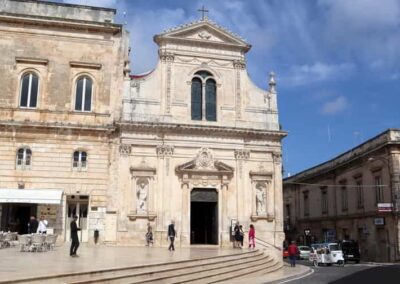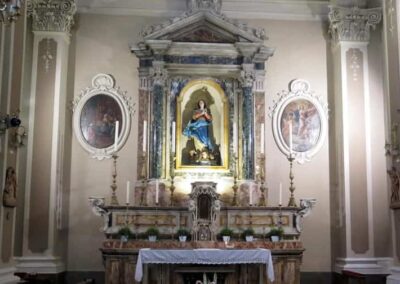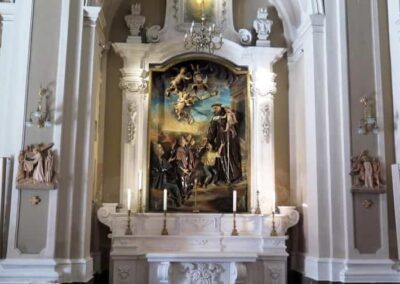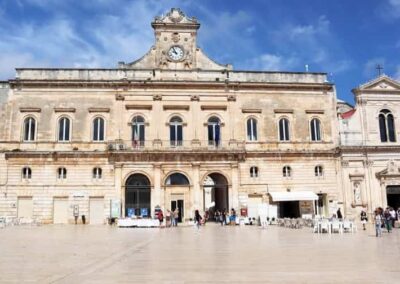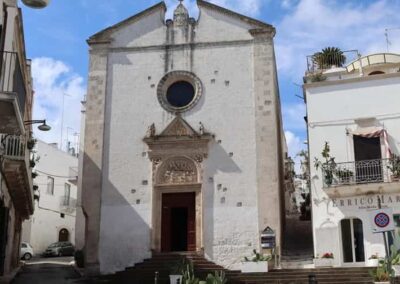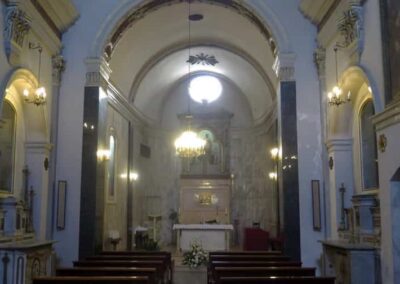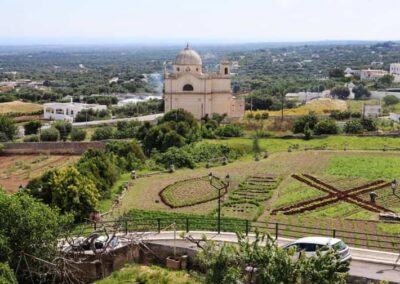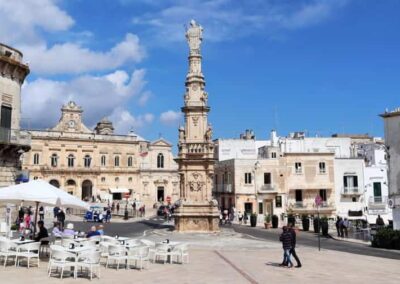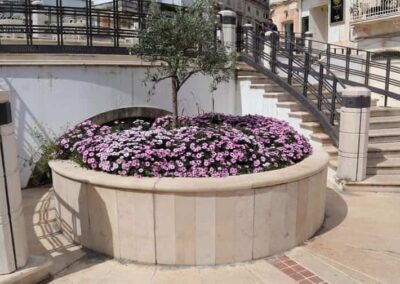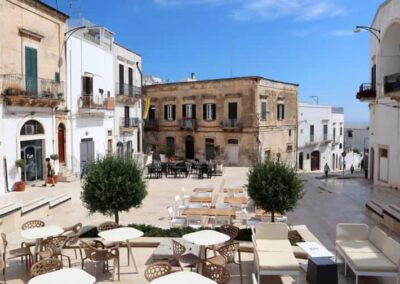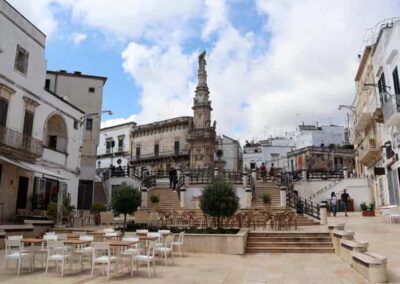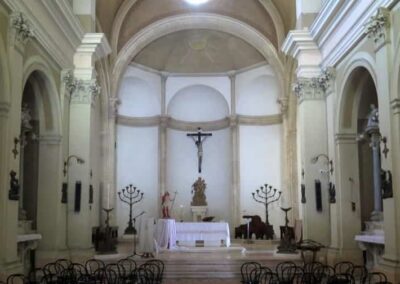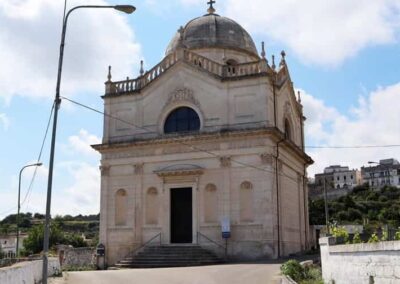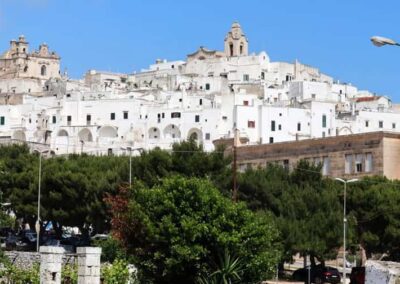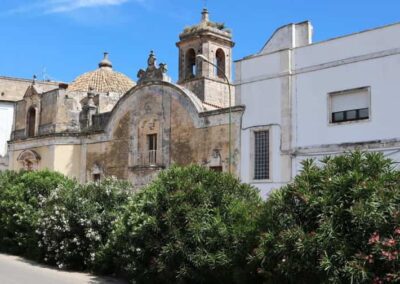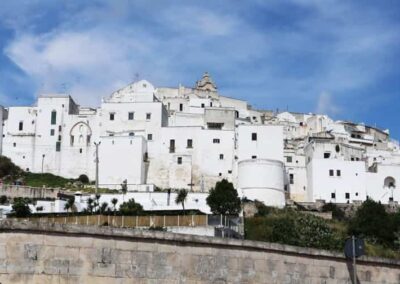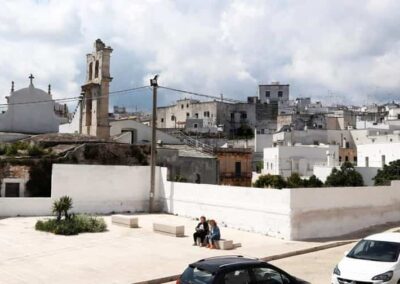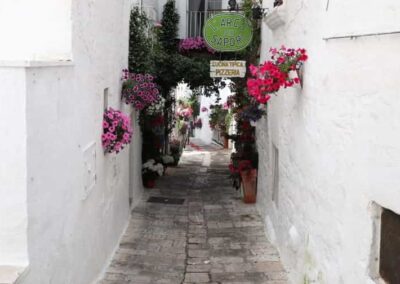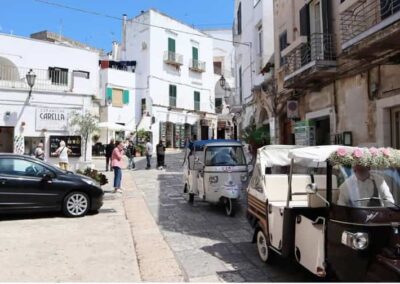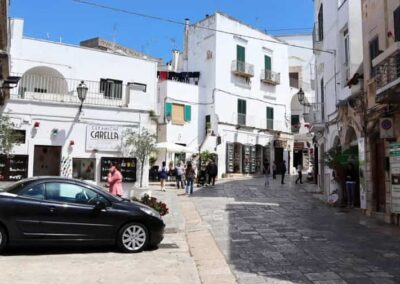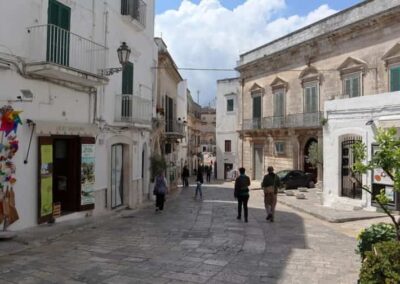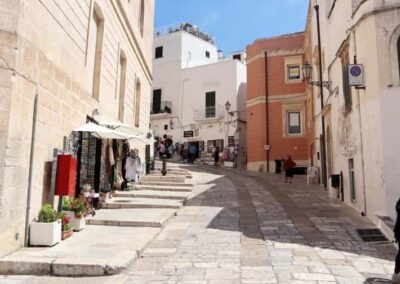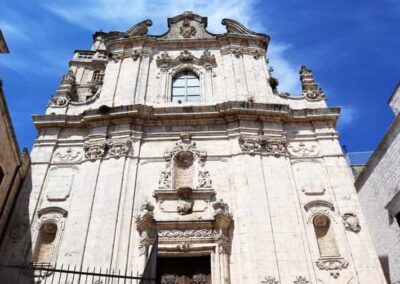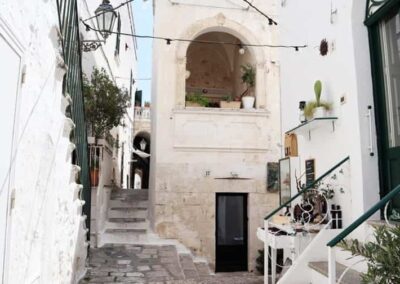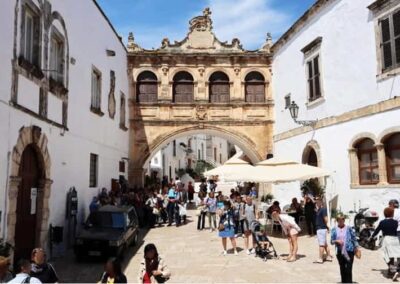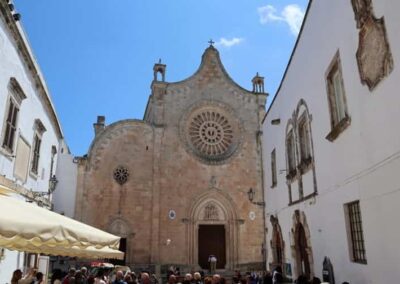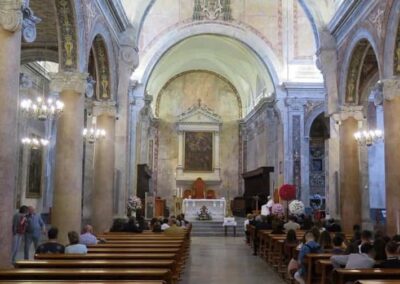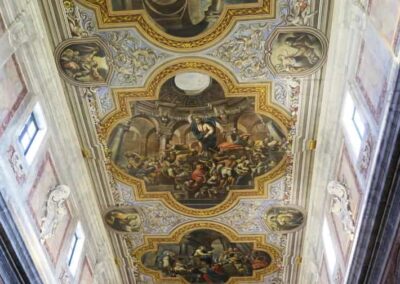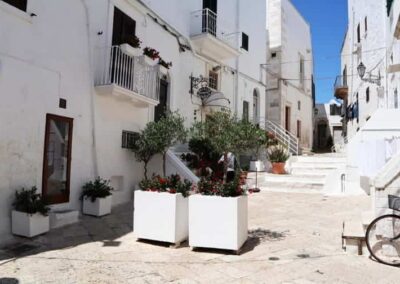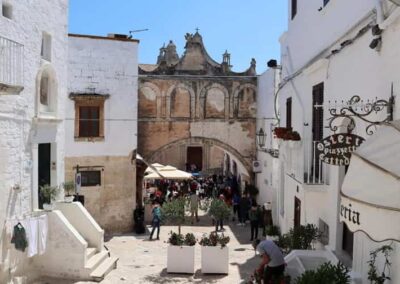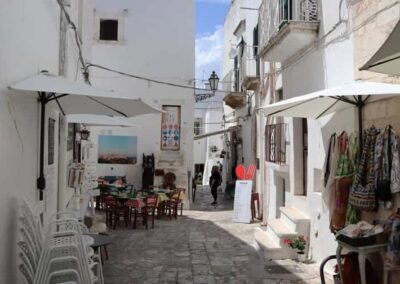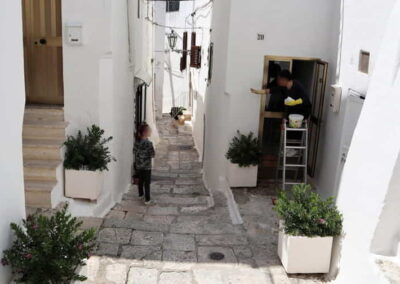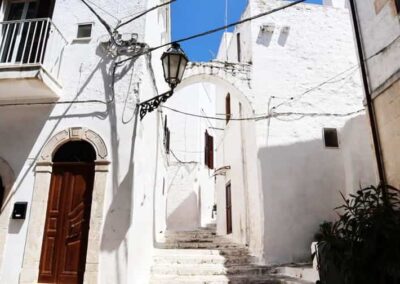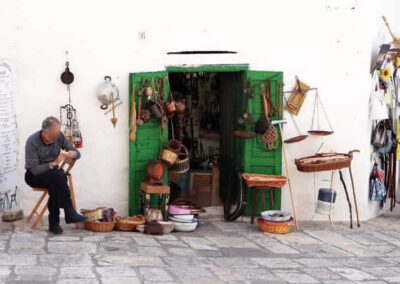HOME
THE REGIONS OF ITALY
PLACES IN ITALY
Italy in Photos
Via Giuseppe Rodio, 72017 Ostuni, Italy (June 2019)
Ostuni
Pescara, a lively and dynamic city located on Italy’s Adriatic coast, is a place where natural beauty, history, and modernity converge. As the largest city in the Abruzzo region, Pescara serves as a vital economic, cultural, and transportation hub. Known for its stunning beaches, rich historical background, and vibrant urban life, Pescara attracts visitors from across Italy and beyond, offering a unique blend of experiences that cater to a variety of interests. Pescara’s strategic location along the Adriatic Sea has been central to its development over the centuries. The city is divided by the Pescara River, which flows from the Apennine Mountains and empties into the Adriatic. This natural feature has played a significant role in the city’s history, serving as a natural boundary and a resource that facilitated trade and transportation. The history of Pescara dates to ancient times when it was known as Aternum, a significant port during the Roman era. Aternum was a key trading centre, linking Rome to the eastern Mediterranean via the Adriatic. The remains of the ancient Roman settlement, including parts of a bridge and roads, can still be seen in the area, serving as a testament to Pescara’s long and storied past. Throughout the Middle Ages, Pescara was contested by various powers due to its strategic location. It was part of the Kingdom of Sicily and later the Kingdom of Naples, and during these periods, the city experienced both growth and conflict. The modern city of Pescara, however, only began to take shape in the 19th century, following the unification of Italy, when it became an important military and industrial centre.
Today, Pescara is a bustling urban centre with a population of over 120,000 residents. The city is characterized by its modern architecture, wide boulevards, and a vibrant cultural scene. Pescara’s economy is diverse, with strong sectors in tourism, commerce, industry, and services. The city’s port remains a key asset, serving as a gateway for trade and travel to and from the Adriatic and beyond. One of Pescara’s most significant modern developments is its role as a transportation hub. The city is home to the Pescara Centrale train station, which connects it to major cities such as Rome, Milan, and Bologna. Additionally, Pescara has an international airport, Abruzzo Airport, which provides access to various European destinations. This connectivity has made Pescara a convenient destination for both business and leisure travellers. Pescara has a rich cultural life, with numerous museums, galleries, and theatres that celebrate its artistic heritage. One of the city’s most famous sons is the poet Gabriele D’Annunzio, a prominent literary figure in Italy. The house where he was born, Casa Natale di Gabriele D’Annunzio, has been preserved as a museum, offering insights into his life and works.
The city also hosts various cultural events throughout the year, including the Pescara Jazz Festival, one of the oldest and most prestigious jazz festivals in Italy. This event attracts renowned musicians from around the world and adds to Pescara’s reputation as a vibrant cultural centre. Pescara is renowned for its beautiful coastline, which stretches for several kilometres along the Adriatic Sea. The city’s beaches are some of the best in Italy, featuring soft golden sands and clear blue waters. These beaches are a major draw for tourists, particularly during the summer months when the city comes alive with beachgoers, festivals, and nightlife. The Lungomare, Pescara’s seafront promenade, is a popular spot for walking, cycling, and enjoying the sea breeze. Lined with palm trees, cafes, and restaurants, the Lungomare offers stunning views of the Adriatic and is a central part of the city’s social life. Beyond the beaches, Pescara is surrounded by natural beauty. The nearby Apennine Mountains offer opportunities for hiking, skiing, and exploring Italy’s rugged interior. The region is also home to several national parks, including the Majella National Park, known for its diverse flora and fauna.
Pescara is a city of contrasts, where the old meets the new, and the natural world blends seamlessly with urban life. Its historical roots as an ancient port and its modern status as a thriving city create a unique atmosphere that is both welcoming and dynamic. Whether you’re interested in history, culture, or simply relaxing by the sea, Pescara offers something for everyone. Pescara is not just a gateway to the Adriatic, but a destination in its own right. With its rich history, vibrant culture, and stunning natural surroundings, Pescara invites visitors to explore its many facets and discover the unique charm of this coastal city. Whether strolling through its modern streets, enjoying its beaches, or delving into its past, Pescara offers a diverse and enriching experience that captures the essence of Italy’s Adriatic coast.
Worth a Visit
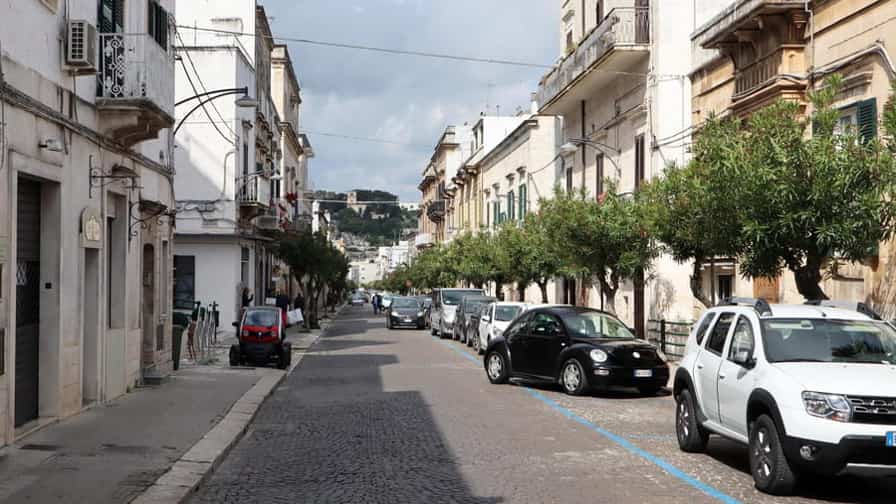
Corso Giuseppe Mazzini in Ostuni, Italy, is one of the town’s central streets, offering a blend of local charm, daily life, and convenient access to key landmarks. Located in the heart of Ostuni’s modern district, the street serves as an important connection between the picturesque old town and the surrounding neighbourhoods. Lined with shops, cafés, and services, it reflects the rhythm of everyday life in contrast to the more historic, touristic areas of the “White City.” Its strategic position makes it a popular route for both residents and visitors, providing access to public amenities, transport links, and cultural spots. From here, one can easily explore Ostuni’s famous whitewashed old quarter, admire panoramic views of the Adriatic coast, or enjoy the lively atmosphere of the newer part of town. Corso Giuseppe Mazzini is not only practical but also a true expression of Ostuni’s vibrant community spirit.
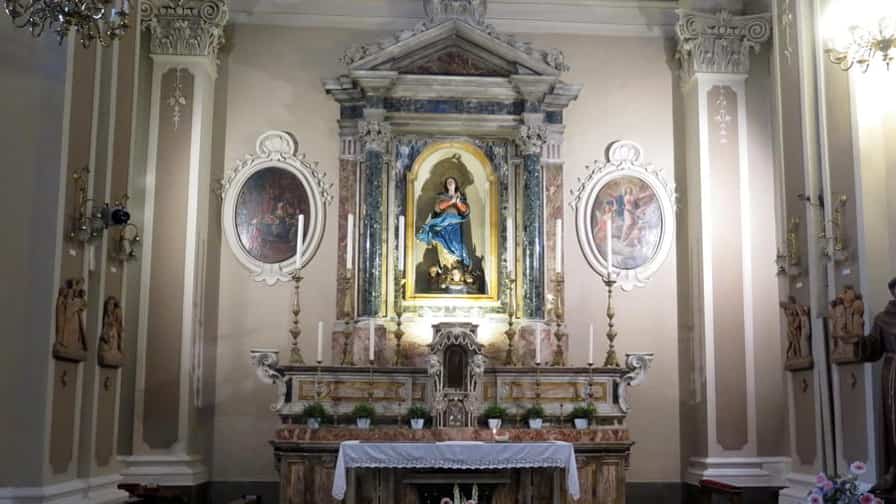
The Chiesa di San Francesco, located along Corso Giuseppe Mazzini in Ostuni, Italy, is a remarkable landmark that reflects the town’s deep religious and cultural heritage. Originally built in the 14th century and later transformed in the 18th century, the church combines elements of Gothic and Baroque architecture, creating a harmonious and elegant presence in the heart of the White City. Its striking façade, adorned with ornate details, invites visitors to step inside and experience a peaceful, spiritual atmosphere. The interior is equally captivating, featuring refined altars, sacred artworks, and a sense of tranquillity that contrasts beautifully with the lively streets outside. As one of Ostuni’s most significant churches, it stands not only as a place of worship but also as a cultural and historical treasure. Easily accessible from the main square and nearby attractions, the Chiesa di San Francesco is a must-see for anyone exploring Ostuni’s charm.
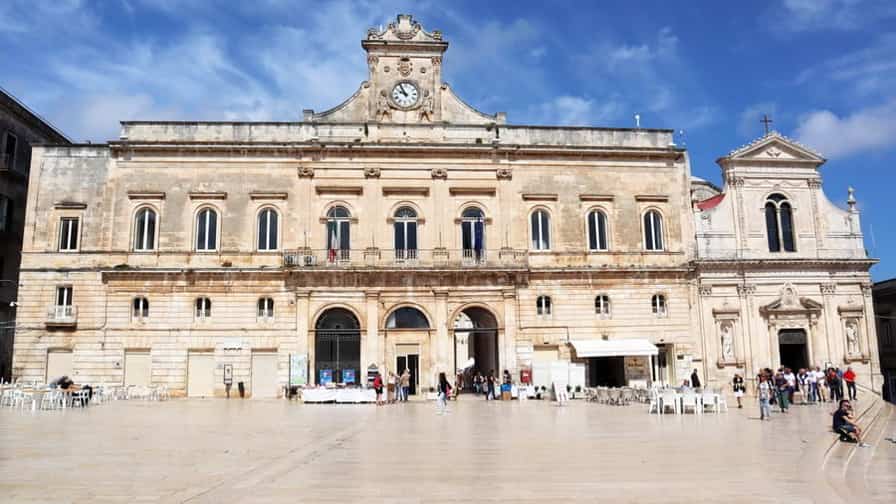
Piazza della Libertà is the vibrant heart of Ostuni, a lively square where history, culture, and community life come together. Surrounded by elegant buildings and charming cafés, the piazza is the main gathering point for both locals and visitors. Dominating the square is the impressive 18th-century Obelisk of Sant’Oronzo, a monument dedicated to the town’s patron saint, who is credited with protecting Ostuni from plague and disaster. Nearby, the former Convento di San Francesco, now the Town Hall, adds historical depth with its grand architecture. The piazza serves as the perfect starting point to explore Ostuni, linking the winding streets of the medieval old town with the broader modern district. By day, it is filled with movement and light, while in the evening it transforms into a lively social hub with restaurants and events. Piazza della Libertà is truly the beating heart of the “White City.”

The Concattedrale di Santa Maria Assunta in Cielo, standing proudly in Piazza Beato Giovanni Paolo II, is the spiritual and architectural centerpiece of Ostuni. Originally constructed in the 15th century, the cathedral blends late Gothic and Romanesque influences with later Baroque touches, creating a harmonious and striking monument. Its most distinctive feature is the grand rose window on the façade, a finely carved masterpiece that symbolizes eternity and divine light. Inside, visitors are greeted by a bright and serene space adorned with elegant altars, sacred artworks, and refined details that reflect centuries of devotion. The cathedral has long been a place of worship and community gathering, serving as both a religious and cultural landmark in the “White City.” Its prominent location at the highest point of Ostuni offers not only a spiritual experience but also sweeping views of the old town’s whitewashed streets and the surrounding Apulian landscape.
Photo Gallery of Walk 1 – Corso Giuseppe Mazzini to Corso Vittorio Emanuele II
Approximately 1.18 km – 0.73 miles
The walk starts in Corso Giuseppe Mazzini – Via Giuseppe Rodio – Giuseppe Orlando – Via Giuseppe Rodio – Corso Giuseppe Mazzini – Vicolo Domenico Anglani – Corso Giuseppe Mazzini – Vico Aurelio Saffi – Corso Giuseppe Mazzini – Via G. Pisanelli – Corso Giuseppe Mazzini – Chiesa di San Francesco, Corso Giuseppe Mazzini – Piazza della Libertà – Via Matteo Renato Imbriani – Chiesa dello Spirito Santo, Via Roma – Corso Vittorio Emanuele II
Photo Gallery of Walk 2 – Via Indipendenza to Via Giovanni Antonio Petrarolo
Approximately 1.51 km – 0.94 miles
The walk starts in Via Indipendenza -Via Salvatore Tommasi – Chiesa del Carmine, Via Giosuè Pinto – Unnamd Roads – Via Arciduca Francesco Antonio Zaccaria – Via Cattedrale – Concattedrale di Santa Maria Assunta in Cielo, Piazza Beato Giovanni Paolo II – Piazza Beato Giovanni Paolo II – L. Arcidiacono Trinchera – Arco Scoppa, L. Arcidiacono Trinchera – Via F. Incalzi Antonelli – Vico Pasquale Villari – Via Giovanni Antonio Petrarolo
COPYRIGHT © 2018-2025 ITALY IN PHOTOS - ALL RIGHTS RESERVED
